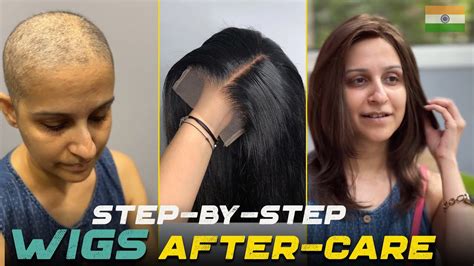Cancer treatments like chemotherapy can lead to hair loss, affecting the patients’ self-esteem and quality of life. However, wigs can provide a practical and empowering solution.

Why Wigs?
- Immediate Hair Replacement: Wigs offer instant hair restoration, concealing hair loss and restoring a sense of normalcy.
- Style and Confidence: They come in a wide range of styles, colors, and lengths, allowing patients to choose wigs that match their preferences and boost their confidence.
- Protection from Sun and Cold: Wigs shield the scalp from harsh weather conditions, offering comfort and protection.
The Cancer Wig Market
According to the American Cancer Society, over 1.9 million new cancer cases are diagnosed each year in the US. With hair loss as a common side effect, the market for cancer wigs is expected to grow:
| Year | Market Size | Growth Rate |
|---|---|---|
| 2022 | $1.5 billion | 5.2% |
| 2027 | Projected $2.2 billion | 7.1% |
Types of Wigs
Cancer wigs are classified into three main types:
- Synthetic Hair Wigs: Made from synthetic fibers, they are affordable, easy to care for, and maintain their style well.
- Human Hair Wigs: Crafted from real human hair, they offer exceptional realism, breathability, and styling versatility.
- Hybrid Wigs: Combine synthetic and human hair for a balance between cost, appearance, and durability.
Choosing the Right Wig
Selecting the perfect wig requires careful consideration:
- Hair Texture: Consider the patient’s natural hair texture and match it with a wig of similar texture to create a seamless blend.
- Color: Choose a color that complements the patient’s skin tone and eye color.
- Style: Opt for a style that aligns with the patient’s personality and lifestyle.
- Fit: Ensure a snug and comfortable fit that does not cause irritation or slippage.
Benefits of Wigs
Wigs offer a multitude of benefits for cancer patients:
- Emotional Support: They enhance self-esteem and reduce anxiety associated with hair loss.
- Quality of Life: Restore a sense of normalcy and improve overall well-being.
- Privacy: Provide a discreet way to manage hair loss without revealing the diagnosis.
- Fashion Expression: Allow patients to express their individuality and creativity through their wig choice.
Wig Care and Maintenance
Proper wig care ensures longevity and optimal performance:
- Washing: Use lukewarm water and mild shampoo designed specifically for wigs.
- Styling: Limit heat styling and use appropriate products to avoid damage.
- Storage: Store wigs on a wig stand or in a soft cloth bag when not in use.
- Professional Maintenance: Consult with a wig stylist for regular trims and repairs to maintain their appearance.
Conclusion
Wigs serve as invaluable tools for cancer patients, providing emotional support, enhancing confidence, and promoting a sense of normalcy during their journey of recovery. By understanding the types, benefits, and proper care of wigs, patients can make informed decisions that positively impact their well-being.
